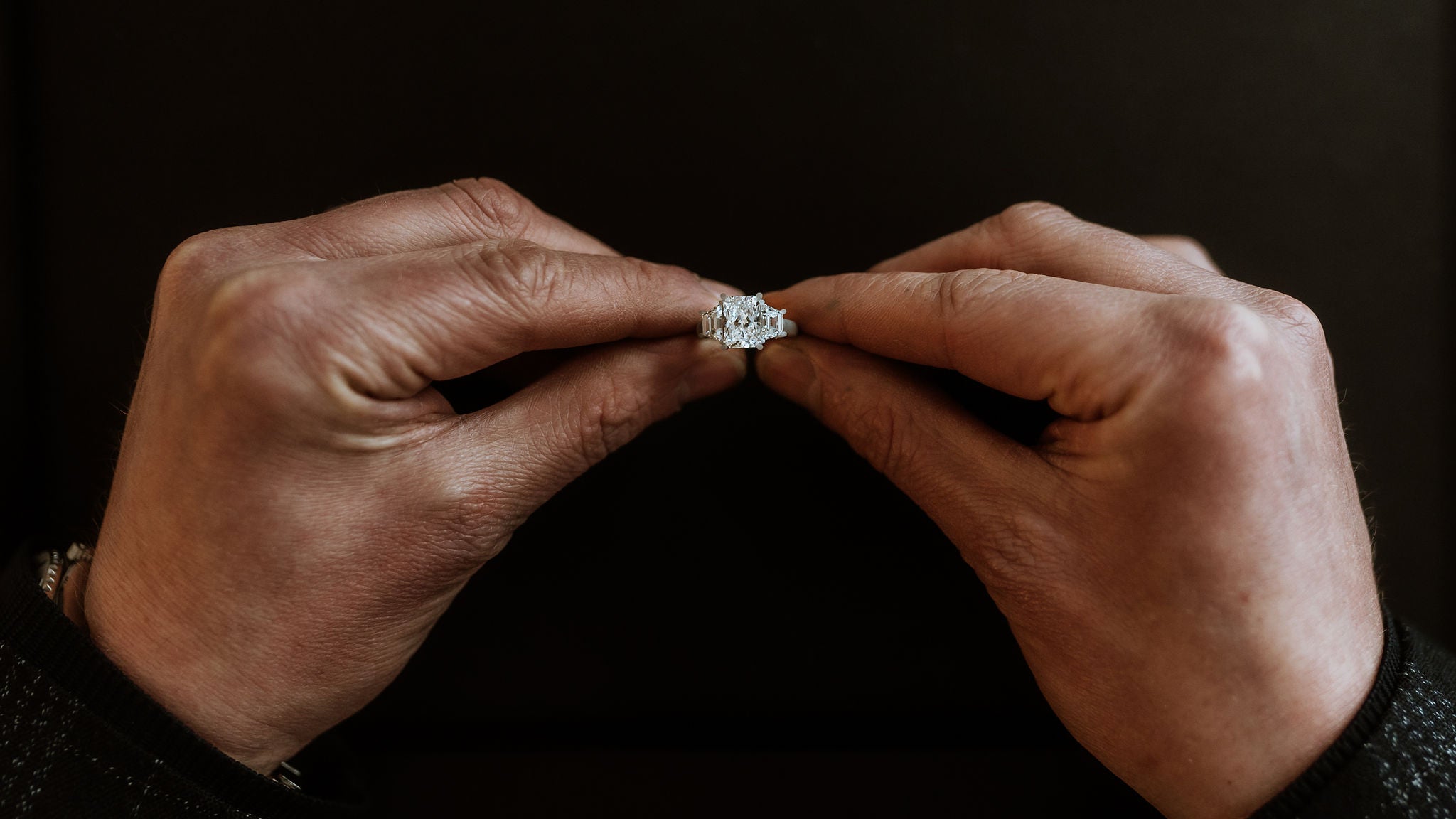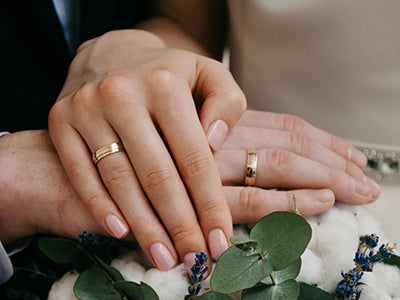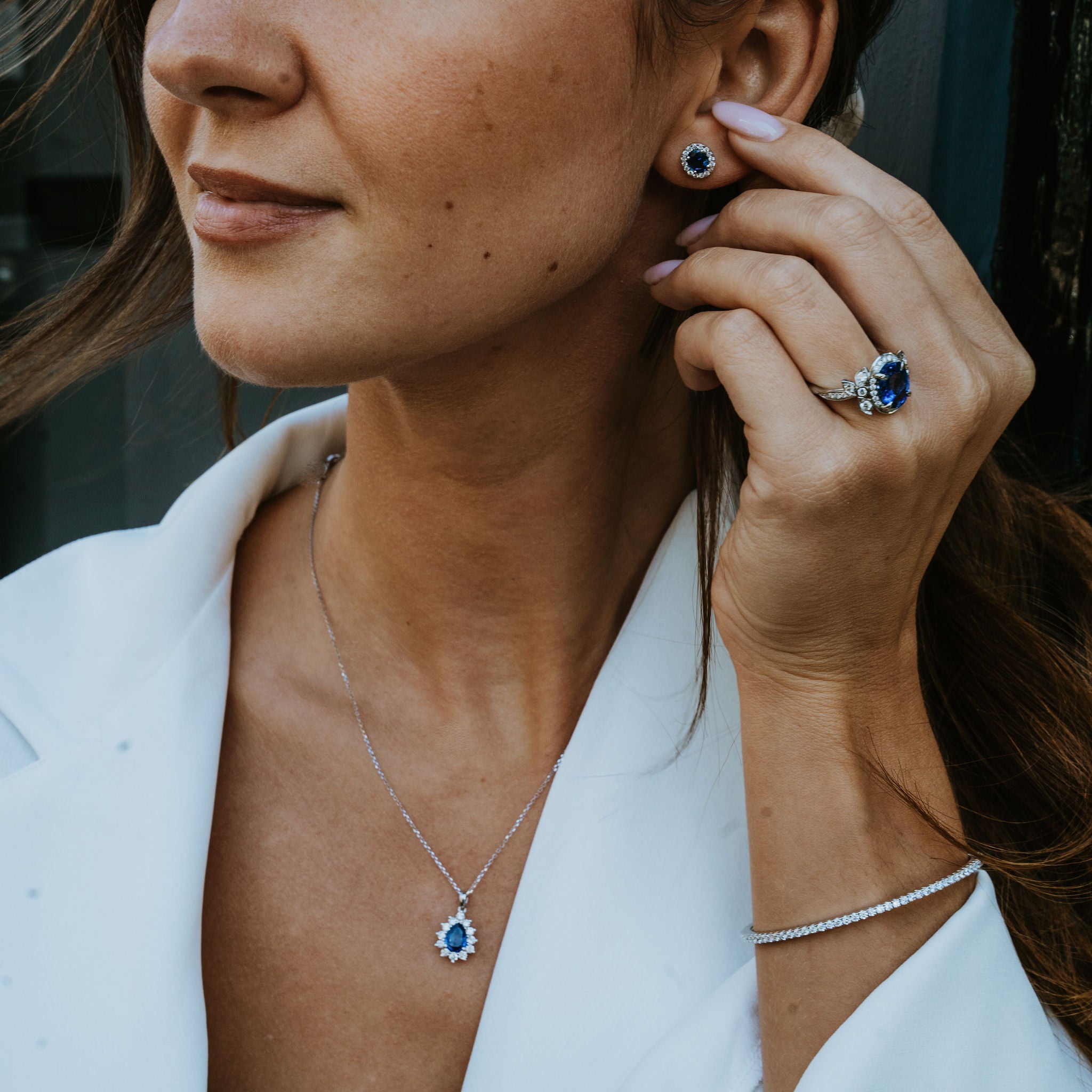 The use of diamonds in jewellery dates back thousands of years and it is easy to see why this is so. The pristine white colour and natural sparkle of a classic diamond make it a stunning gem, while its exceptional hardness, marked as 10/10 on the Mohs scale, means it is wonderfully durable and will avoid scratches and damage no matter how long it is worn.
The use of diamonds in jewellery dates back thousands of years and it is easy to see why this is so. The pristine white colour and natural sparkle of a classic diamond make it a stunning gem, while its exceptional hardness, marked as 10/10 on the Mohs scale, means it is wonderfully durable and will avoid scratches and damage no matter how long it is worn.
All of this makes diamonds immensely precious and means that there will always be shortcomings to any cheaper imitations, which, while visually similar, will lack the essential qualities of this piece of pure carbon, especially its hardness.
For example, a cubic zirconia has a Mohs scale hardness of 8.5 (the scale works on a curve, so this is a lot less than 85 per cent of the hardness of a diamond).
Colour Variations In Diamonds
While other gems cannot match the hardness of diamonds, they can, of course, offer other things, such as different colours. But some may not be aware that diamonds can provide this variety as well, while retaining their characteristic hardness.
For example, we sell a range of beautiful pear cut diamond rings. The white diamond looks fabulous. But just imagine if it really was the colour of a pear, or if the emerald cut diamond was actually the same colour as an emerald, but without the relative weakness (7.5 on the Mohs scale) of an actual emerald.
Green diamonds are indeed a thing, as are diamonds that come in a range of other colours, such as pink, blue or yellow.
Sometimes, these can be regarded as being ‘impure’, as of course, such colouration can only come from what would be pure carbon (that produces a white diamond) being mixed with a bit of another mineral to produce a colour variation, or influenced in another way.
Coloured diamonds are not that rare, but in many cases, the colouration is dull, faint and unattractive, which means they are used in industry (for example, in cutting tools), rather than as jewellery. However, on occasions such diamonds, especially rare blue ones, have stunning colours and have been sold for vast sums at auction.
Our Coloured Diamonds
You can see several examples of coloured diamonds in our online shop, such as a trilogy ring in which the large, central diamond is yellow; a gold stacking ring with teal diamonds; and a black diamond star ring.
There are many causes for these colour variations. A yellow diamond, for instance, has a small quantity of nitrogen in it, which absorbs more blue light, causing it to look yellow.
Lots of diamonds have enough nitrogen to produce some yellow or brown staining, making this the most common (and not always attractive) colour. However, as the ring in our range shows, some can be very vivid colours.
By contrast, blue diamonds are coloured that way due to the presence of boron and are much less common.
While ‘black diamond’ may be the nickname of coal due to its high carbon content, an actual black-coloured diamond gets that colour due to the presence of graphite. As for green diamonds, radiation exposure can cause this colour to arise, a process that can also be achieved artificially in the laboratory.
Indeed, these natural variants in diamond colour can all be achieved with lab-grown diamonds, which means they can be readily available for those who desire them and don’t require somebody to dig up and cut a new natural specimen.
This kind of variation can be seen in lots of gems, of course, either naturally or through artificial treatment (the latter producing green amethysts, for example). This is as opposed to some metallurgical processes used by jewellers in which a variant is always a deliberate creation, such as the mixing of copper with gold to produce ‘rose gold’.
Why Go For Coloured Diamonds?
By wearing coloured diamonds, you really can enjoy the best of both worlds. You have the hardest and most enduring gemstone around, often in a rare and stunningly beautiful colour. It offers something novel and contrasting, which may help it stand out if you have other diamond jewellery already.
In addition, it makes possible colour combinations that can still be made entirely of diamond but in different hues, rather than combining a diamond with another gem, perhaps one that is a long way down the Mohs scale and therefore wouldn’t last as long.
While the existence of coloured diamonds may be a novelty to some people and sometimes seen as a negative (which it is when the colour is dull), it can occasionally provide something wonderful and glorious. Your friends may be amazed when you tell them that, despite the different colour, it is still a diamond.





